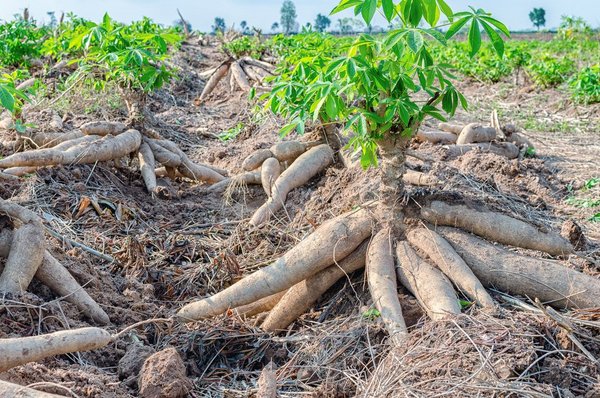- Share this article
- Subscribe to our newsletter
First disease resistant cassava with higher levels of iron and zinc developed
Delivering the benefits of agricultural biotechnology to smallholder farmers requires that resources be directed towards staple food crops. To achieve effect at scale, beneficial traits must be integrated into multiple, elite farmer-preferred varieties with relevance across geographical regions. For the first time, an international team of scientists, led by Narayanan Narayanan, PhD, senior research scientist, Nigel Taylor, PhD, associate member, and Dorothy J. King, Distinguished Investigator at the Donald Danforth Plant Science Center in St. Louis, USA, and their collaborators in Nigeria, led by Ihuoma Okwuonu, PhD, of the National Root Crops Research Institute in Umudike, and the US Department of Agriculture, have developed cassava displaying high-level resistance to cassava mosaic disease (CMD) and cassava brown streak disease (CBSD) as well as higher levels of iron and zinc.
This is the first time that disease resistance and multiple biofortification traits have been stacked in such a manner in a non-cereal crop. The results of their research, “Stacking disease resistance and mineral biofortification in cassava varieties to enhance yields and consumer health”, were published in November 2020, in Plant Biotechnology Journal.
The research builds on a 2019 paper, “Biofortification of field-grown cassava by engineering expression of an iron transporter and ferritin”, published in Nature Biotechnology, and demonstrating that increasing the mineral content of cassava storage roots was possible. RNAi-mediated technology was used to achieve resistance to CBSD in two East African and two Nigerian farmer-preferred cultivars along with AtIRT1 (major iron transporter) and AtFER1 (ferritin) transgenes to achieve nutritionally significant levels of iron and zinc in cassava storage roots (145 and 40 µg/g dry weight, respectively).
The inherent resistance to CMD was maintained in all four disease-resistant and mineral-enhanced cassava cultivars, demonstrating that this technique could be deployed across multiple farmer-preferred varieties to benefit the food and nutritional security of consumers in Africa.
A big step forward with cutting-edge technology
Combining technologies was not easy. “Production of plants with disease and elevated mineral nutrition concentration was technically more challenging to produce than for disease resistance alone” said Narayanan, who has been working on improving cassava for 15 years. “We had to make sure the minerals were accumulated in the storage root, not the stem or leaves, and at the right level for consumers. Too much accumulation is also a problem as this will kill the plant.”
It is important to confirm that the higher mineral levels are retained during food processing and cooking so that better nutrition can actually reach the dinner plate and the digestive tract.
The research team under the direction of Okwuonu prepared gari and fufu. These two common West African foods required a four-day process involving chopping, soaking, fermenting, pressing and roasting of the cassava root. They found that high levels of iron and zinc were retained through cooking and remained available for absorption in the gut following digestion. Ultimately, the biofortified cassava could benefit health in cassava consuming populations by providing 40-50 per cent of Estimated Average Requirements (EAR) for iron and 60-70 per cent of EAR for zinc for children and women in West Africa.
“To see these results of using cutting-edge technology to improve an orphan crop was a big day for me,” said Taylor. "Farmers who have cassava plants that are resistant to two incredibly destructive diseases with more minerals in every bite have the potential to improve the nutrition and health of millions of people in West Africa.”
(ISAAA/danforthcenter/wi)
Reference:
Stacking disease resistance and mineral biofortification in cassava varieties to enhance yields and consumer health
Narayanan Narayanan, Getu Beyene, Raj Deepika Chauhan, Michael A. Grusak, Nigel J. Taylor
First published: 15 November 2020, https://doi.org/10.1111/pbi.13511
More information:
The Donald Danforth Plant Science Center
The National Root Crops Research Institute, Umudike, Nigeria





Add a comment
Comments :